You are here
7 Key Facts About U.S. Healthcare Spending

Healthcare spending in the United States is a key driver of the nation’s fiscal imbalance and has risen notably over the past few decades. Recent data from the National Health Expenditure Accounts released by the Centers for Medicare and Medicaid Services reveal important insights about why healthcare spending is rising, and what it means for our fiscal condition, budget, and economy. Below are seven key takeaways from the recent data.
Healthcare spending per person in 2022 resumed its pre-pandemic rate of growth.
Healthcare spending per capita spiked during the pandemic before falling below historical norms in 2021 as the nation began to emerge from the crisis. In 2022, healthcare spending returned to growth at a rate similar to pre-pandemic levels. Per person, healthcare spending nearly averaged $13,500 in 2022 — a 3.7 percent increase from 2021.Healthcare spending fell relative to the size of the economy.
Relative to the size of the economy, healthcare spending in 2022 totaled 17.3 percent of gross domestic product (GDP) — down from 18.2 percent in 2021. That drop can mostly be attributed to the waning of the pandemic and related spending as well as growth in the economy during the recovery.Federal healthcare programs accounted for almost half of healthcare spending.
Through Medicare, Medicaid, and other programs, the federal government accounted for $1.9 trillion, or 48 percent, of all national health expenditures in 2022. That total is an increase of 7.1 percent from the previous year, primarily driven by growth in Medicare and Medicaid. Accounting for the largest portion of federal spending, Medicare spending grew from $892 billion in 2021 to $944 billion in 2022 — a 5.9 percent increase. Medicaid spending increased by 9.6 percent, from $735 billion to $806 billion.Spending through Medicare Advantage continued to grow.
Much of the increase in Medicare spending was due to a rise in spending under Medicare Advantage (MA), which allows Medicare beneficiaries to receive benefits from private plans rather than the traditional Medicare program. In 2022, spending under MA plans grew by 15.1 percent, partially due to an 8.5 percent increase in enrollment (representing 48.0 percent of total Medicare enrollments in 2022). Those higher costs were partially offset by a decline in spending through Medicare’s fee-for-service program, which dropped by 1.9 percent.The annual growth in Medicaid spending exceeded 9 percent for the third year in a row.
Medicaid totaled $806 billion in 2022 and grew by 9.6 percent from the previous year — the third year in which growth surpassed 9 percent. The growth can primarily be attributed to greater enrollment in the program since COVID-related legislation temporarily expanded Medicaid eligibility and ensured coverage during the health emergency regardless of fluctuations in family circumstances and without requiring additional paperwork (known as continuous enrollment). From 2020 to 2022, Medicaid enrollment increased by 14.6 million people. However, growth in Medicaid spending is expected to slow in 2023 and 2024 because the continuous enrollment provision expired in April 2023 and states have begun removing individuals from the program. Medicaid enrollment growth slowed to 6.5 percent in 2023 (down from 8.4 percent in 2022) and is projected to decline by 8.6 percent in 2024, according to a survey of state Medicaid officials conducted by the Kaiser Family Foundation.Spending on retail prescription drugs continued to increase.
Spending on retail prescription drugs totaled $406 billion in 2022 and accounted for 10.1 percent of all healthcare spending. It was the fastest-growing component of healthcare spending in 2022, growing by 8.4 percent from 2021. Spending on retail prescription drugs does not include those administered in a hospital or doctor’s office setting. Private insurance pays the most for prescription drugs, but the rate at which Medicare and Medicaid spending grew outpaced the growth of 4.9 percent for private insurance. Medicare spending on prescription drugs grew by 9.4 percent from 2021 to 2022, and Medicaid spending grew by 14.4 percent. The faster growth in 2022 was influenced by higher numbers of prescriptions dispensed and an increase in retail prices for prescription drugs after four consecutive years of decline. Those higher prices are primarily due to brand-name medications — although brand-name drugs only make up a small portion of total retail prescriptions dispensed, they accounted for 80 percent of the total market for retail prescription drugs.The aging population influences healthcare costs.
Spending on healthcare varies by age group because of different population sizes and mixed degrees of health status. Relative to their share of the population, adults age 65 and older spend more on healthcare than any other age group — accounting for 27 percent of the U.S. population but 37 percent of healthcare costs. That age group tends to spend more, on average, because health needs increase as we age, and many older adults have at least one chronic condition. Additionally, adults age 65 and older are eligible for Medicare, meaning they have more coverage of healthcare services compared to other age groups.
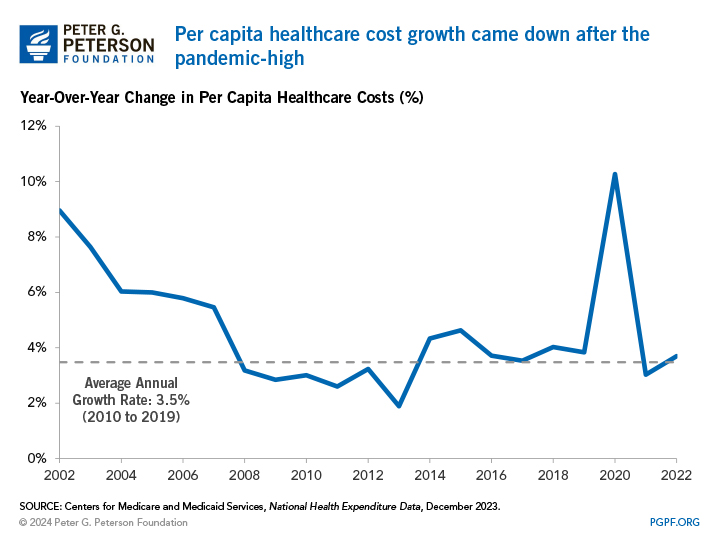
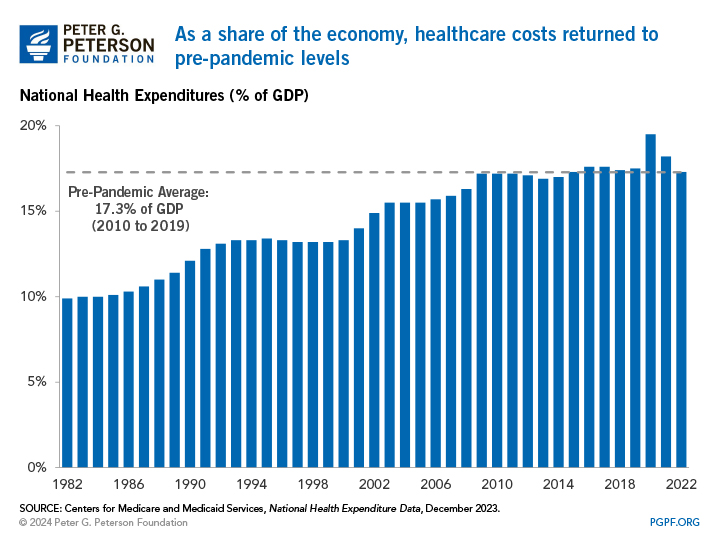
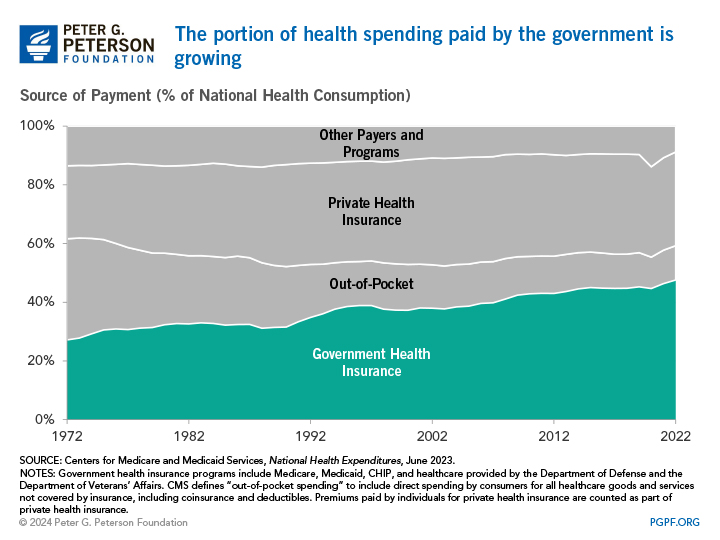
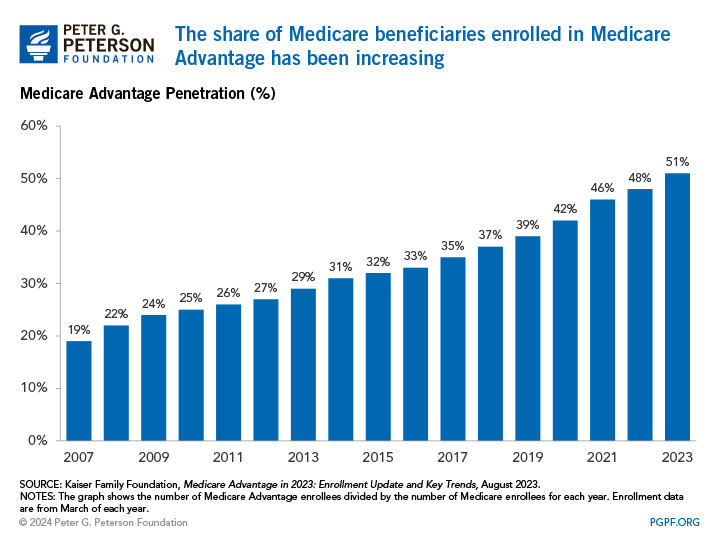
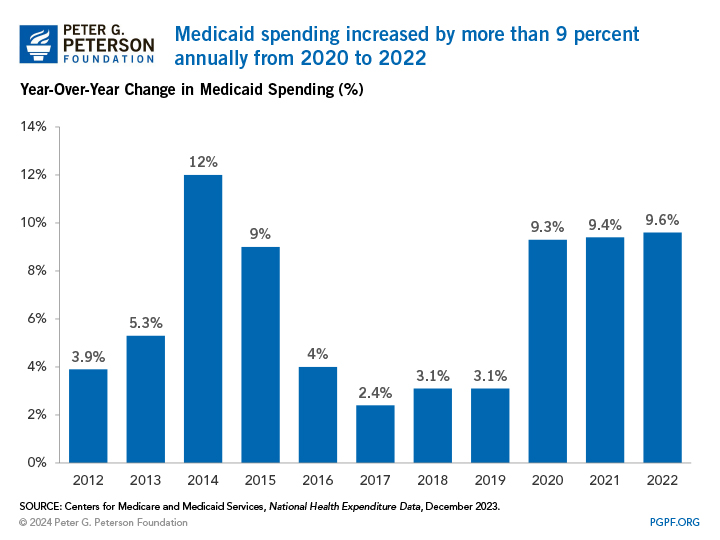
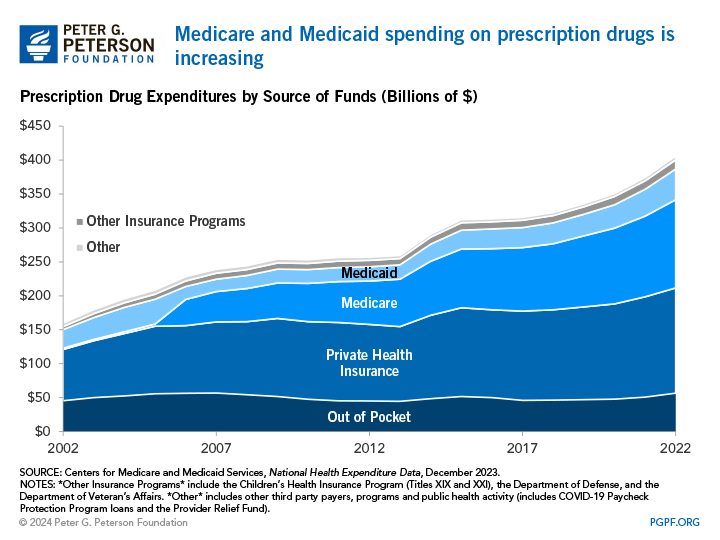
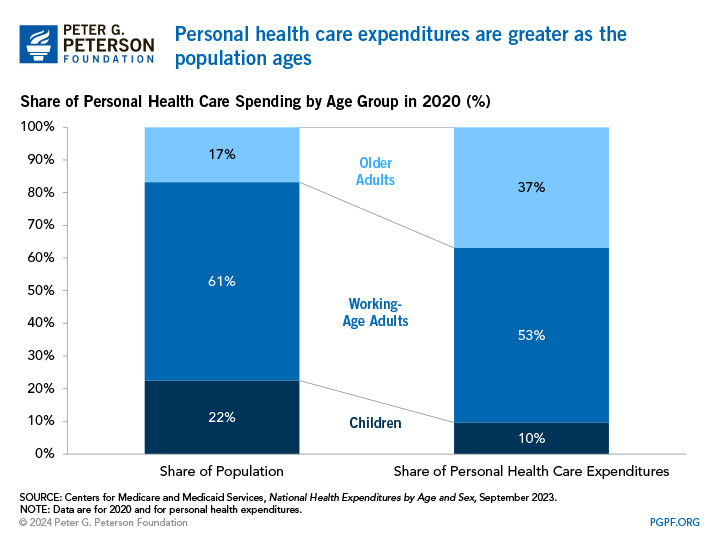
Though healthcare spending in 2022 declined from the heightened levels during the pandemic, health spending is still high in the United States. The United States spends more on healthcare than any other country, but unfortunately does not necessarily provide better outcomes. An inefficient healthcare system also reduces income and makes the economy less competitive. As healthcare spending in the U.S. continues to rise, there are options available to reform our system that will reduce costs while maintaining quality of care.
Related: How Does Government Healthcare Spending Differ From Private Insurance?
Image credit: Photo by Spencer Platt / Getty Images
